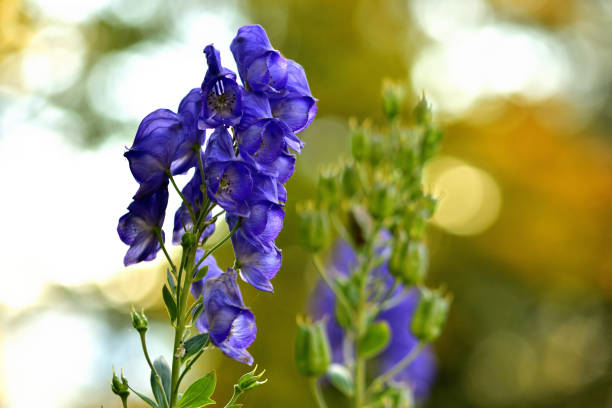Classification: -
Kingdom: Plantae
Class: Eudicots
Order: Ranunculales
Family: Ranunculaceae
Genus: Aconitum
Species: A. napellus
Common name: Monkshood, Aconite, Blue Rocket
Scientific name: Aconitum napellus
Introduction:
Aconitum napellus also called as monkshood or aconite. This plant is famous for its beautiful appearance but it is deadly in nature. This plant belongs to buttercup family of Ranunculaceae. It is most poisonous plant in the world. The plant mainly grows in mountainous regions of Europe, especially in places like Alps and Carpathians. Today, this plant is mainly known for its ornamental beauty but has dangerous properties. It shows that everything beautiful thing in nature is not safe.
Habit and Habitat:
Aconitum napellus is a perennial herb. The lifespan of this plant is more than two years. It grows in well-drained moist or loamy soil having good organic content. The plant of aconite is commonly found in forests or higher altitudes where temperature remains cool. The stem of plant is tall, soft and non-woody. It grows slowly from underground parts of plants such as tubers, which has energy stored that helps plant to survive through winter. The plant requires shade for growth but can also grow in full sunlight in cold climates. The flowers of plants usually appear during summer in the month of June to August.
Morphology and Anatomy:
The plant of aconite grows upright and can reach up to height of 1 to 1.5 meters (3 to 5 feet). It has tall, straight, unbranched stem which produces hood- shaped blue to purple flowers. The stem of the plant supports leaves and flowers. The leaves of plant are shiny, dark green in color which are deeply divided and shows a hand- like appearance. This plant has tuberous roots which are thick and fleshy. But the roots considered very poisonous part of this plant. The flowers of plant are distinctive, blue to violet in color which are arranged in clusters at top of the stem. The upper petals of this plant form a hood or helmet over the rest of the flower which gives it the name of “monkshood”. The fruit of plant is small which produces dry capsules that split open and release small seeds.
Medicinal uses:
Despite of toxicity, Aconitum napellus was used in small doses to treat pain, fever and inflammation. This medicine is used in various healing practices including both in traditional Chinese and Ayurveda. In past decade, the roots of plants were used to make ointments or paste. These ointments were applied externally for treating bruises or swelling. The medicine is also used in the treatment of conditions like arthritis and neuralgia. In homeopathy medicine, it is used to treat symptoms like anxiety, cold, fever and flu.
Causes:
All parts of plants especially seeds and roots are extremely poisonous. If it is eaten or touched it can cause numbness, nausea or vomiting, breathing problems etc. The plant contains toxic chemical called aconitine which affects the heart and nervous system of the body. It should never be used at home or without any strict medical supervision as it can cause severe illness or death of a person.
Speech Disorder
A speech disorder, also known as a speech impairment...
ADHD
Attention-deficit / hyperactivity disorder (ADHD) is a...
Cerebral Palsy(CP)
Cerebral palsy (CP) is a group of neurological disorders...
Cancer
Cancer is a broad term for diseases where cells...




